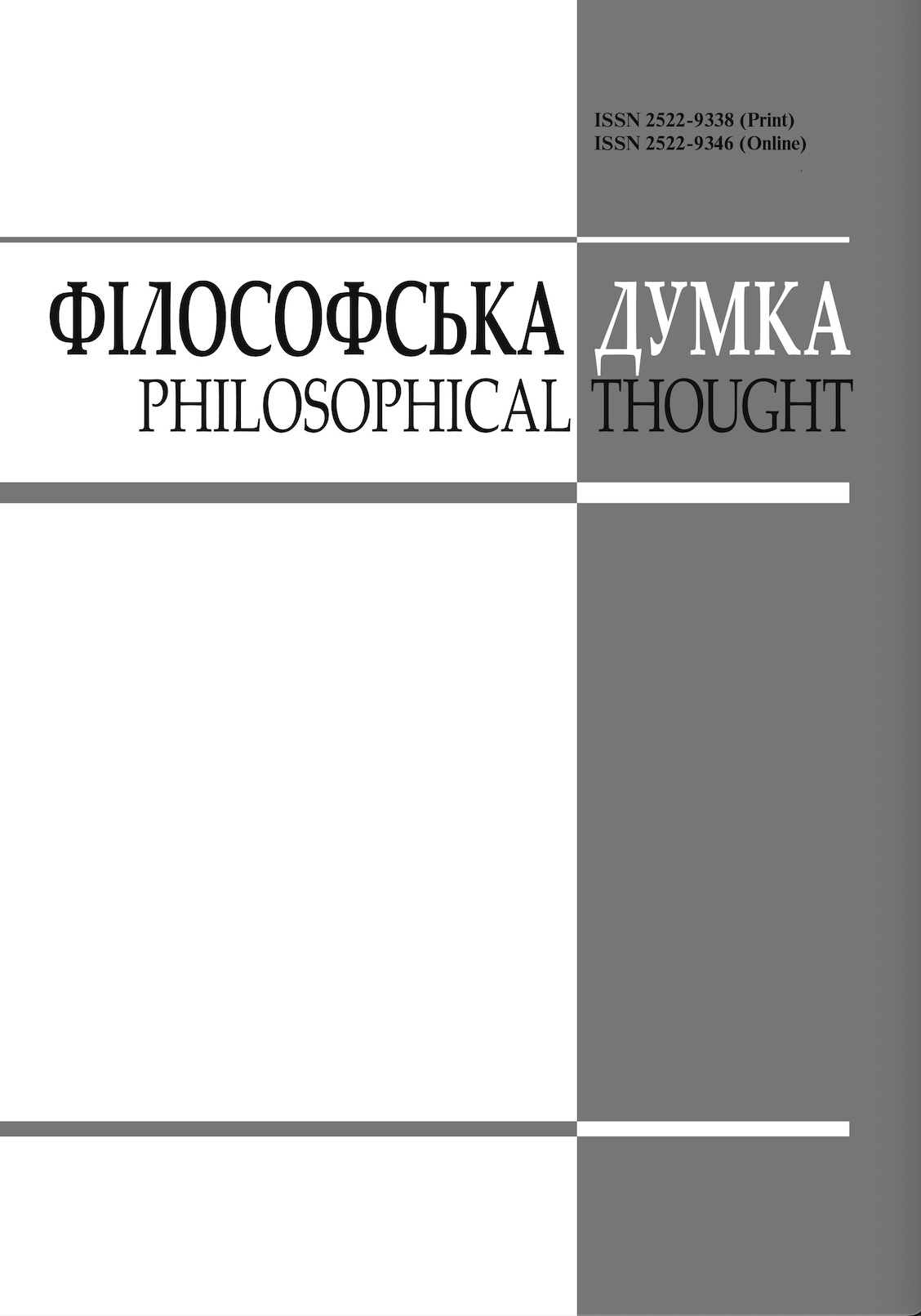On Rhetoric Analysis of the Discourse of Philosophy of Mind
Abstract
The goal of the present paper may be described as the revelation and elucidation of the discursive technique, which distorted, concealed or produced the dominant meanings of the Philosophy of Mind. We examined this discourse as a secondary one. We proceed from Charles S. Peirce’s semiotic theory, namely Peircean consideration of rhetoric as the science of the essential conditions of interpretation; he discovered epistemology of rhetoric based on the distinction in the semiosis between a sign as representment and a sign as interpretant.
We applied “rhetorical” approach to solve the double task: firstly, to understand how and why the philosophy changed its conceptual and rhetorical interface during the transition from Consciousness to Mind; secondly, to outline a range of issues, space, strategy and prospects of interaction of Cognitive Sciences and Philosophy of Mind. We argued that the manifestation of cognitive problems as the trigger of the terminological shift and successive naturalization of the term Mind in philosophy accompanied the invention of new metonymically equivalents of Mind, namely “language”, “memory”, etc.; qualia has become the general “metonymical term” for the definition of Mind; the metaphor of “coontogenetic structural drift” can be used as the tool for describing the mechanism of semantic extension of the concept of Mind.
References
Balibar, E. (2004). Conscience. In: B. Cassin (Ed.), Vocabulaire européen des philosophies
(pp. 260–272). Paris: Le Robert & Seuil. [= Balibar 2004]
Buck-Morss, S. (2008). Globalization, Cosmopolitanism, Politics, and the Citizen. In: M. Smith
(Ed.), Visual Culture Studies (pp.49—66). Los Angeles, London, New Delhi, Singapore:
Sage Publications. [= Buck-Morss 2008]
Clark, A., Chalmers, D. J. (1998). The Extended Mind. Analysis, 58 (1), 7—19. [= Clark 1998] https://doi.org/10.1093/analys/58.1.7
Colapietro, V. (2007). C.S. Peirce’s Rhetorical Turn. Transactions of the Charles S. Peirce Society,
(1), 16—52. [= Colapietro 2007]
Donald, M. (2006). Art and Cognitive Evolution. In: M. Turner (Ed.), The Artful Mind: Cognitive Science and the Riddle of Human Creativity (pp.3—20). Oxford University Press. [= Donald 2006] https://doi.org/10.1093/acprof:oso/9780195306361.003.0001
Lakoff, G. P. (1987). Women, Fire, and Dangerous Things: What Categories Reveal About the Mind.
University of Chicago Press. [= Lakoff 1987]
Man, P. de (1979). Allegories of Reading: Figural Language in Rousseau, Nietzsche, Rilke, and
Proust. New Haven: Yale University Press. [= Man 1979]
Maturana, H. R., Varela, F. J. (1987). The tree of knowledge: The biological roots of human understanding.
Boston: Shambhala Publications. [= Maturana 1987]
Mirzoeff, N. (2008). Visual Culture, Everyday Life, Difference, and Visual Literacy (Interview). In: M. Smith (Ed.), Visual Culture Studies (pp.17—32). Los Angeles, London, New Delhi, Singapore: Sage Publications. [= Mirzoeff, 2008] https://doi.org/10.4135/9781446213957.n2
Downloads
-
PDF (Українська)
Downloads: 216
Published
How to Cite
Issue
Section
License
Authors who publish with this journal agree to the following terms:
- Authors retain copyright and grant the journal right of first publication.
- Authors are able to enter into separate, additional contractual arrangements for the non-exclusive distribution of the journal's published version of the work (e.g., post it to an institutional repository or publish it in a book), with an acknowledgement of its initial publication in this journal.
- Authors are permitted and encouraged to post their work online (e.g., in institutional repositories or on their website) prior to and during the submission process, as it can lead to productive exchanges, as well as earlier and greater citation of published work (See The Effect of Open Access).


